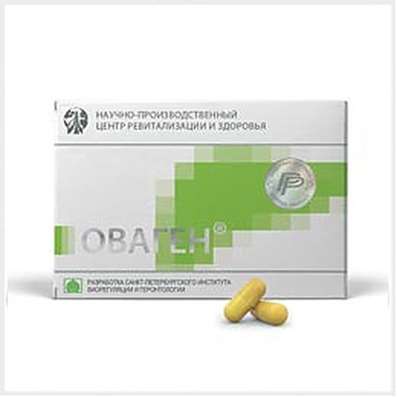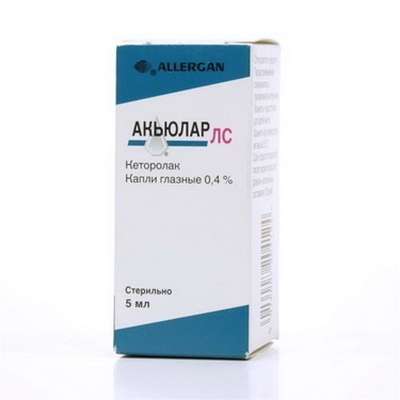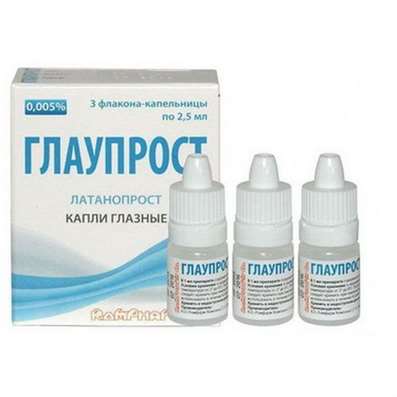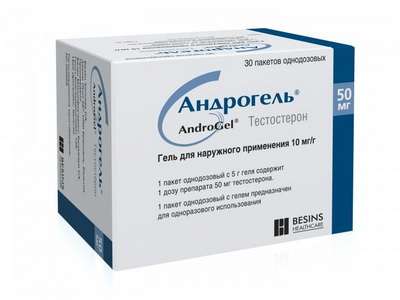Instruction for use: Formoterol (Formoterolum)
I want this, give me price
chemical name (R *, R *) - (±) -N- [2-Hydroxy-5- [1-hydroxy-2 - [[2- (4-methoxyphenyl) -1-methylethyl] amino] ethyl] phenyl] formamide ( as fumarate)
Pharmacotherapeutic group:
Beta-adrenergic agonist
The nosological classification (ICD-10)
J42 Chronic bronchitis, unspecified
recurrent bronchitis, Bronchitis asthma, wheeze bronchitis, chronic Bronchitis, Inflammatory airways disease, bronchi disease, Qatar smoker, Cough in inflammatory diseases of the lung and bronchus, Exacerbation of Chronic Bronchitis, Chronic bronchitis, Chronic obstructive pulmonary disease, Chronical bronchitis, Chronic bronchitis smokers, Chronic spastic bronchitis, allergic Bronchitis
J43 Emphysema
Interstitial emphysema, Emphysema, Chronic lung disease, Chronic obstructive pulmonary disease, Obstructive pulmonary emphysema, Chronic pulmonary emphysema, Chronic obstructive pulmonary emphysema
J44 Other chronic obstructive pulmonary disease
Allergic bronchitis, Bronchitis asthma, Asthmatic bronchitis, wheeze bronchitis, Bronchitis is an obstructive, bronchi disease, Shortness of sputum in acute and chronic respiratory diseases, Cough in inflammatory diseases of the lung and bronchus, Reversible airflow obstruction, Reversible obstructive airway disease, Obstructive bronchitis disease, Obstructive lung disease, Obstructive bronchitis, Spastic bronchitis, Chronic lung disease, Chronic nonspecific lung diseases, Chronic obstructive pulmonary disease, Chronic obstructive bronchitis, Chronic obstructive airway disease, Chronic obstructive pulmonary disease, Restrictive lung pathology
J45 Asthma
Asthma physical effort, status asthmaticus, Bronchial asthma, Asthma lung flow, Bronchial asthma with obstruction of sputum discharge, Bronchial asthma heavy currents, Bronchial asthma physical effort, hypersecretory asthma, Hormone-dependent form of bronchial asthma, Relief of asthma attacks in bronchial asthma, Non-allergic asthma, nocturnal asthma, Exacerbation of asthma, Asthma attacks, Endogenous forms of asthma, Night asthma, Cough with bronchial asthma
CodeCAS 73573-87-2
Description
Bronchodilator (beta2-agonists).
Available in the form of formoterol fumarate dihydrate and formoterol fumarate. Formoterol fumarate - white or yellowish crystalline powder. Freely soluble in glacial acetic acid, soluble in methanol, to a lesser extent - in ethanol and isopropanol, slightly soluble in water, practically insoluble in acetone, ethyl acetate and diethyl ether. The molecular weight of 840.9.
Pharmacological Properties Pharmachologic effect
bronchodilatory, adrenoagonists.
Formoterol fumarate - selective adrenergic agonist, a long-acting beta2-receptors. When inhaled formoterol fumarate acts locally in the bronchial tubes, causing bronchodilation. In in vitro studies have shown that its activity towards the beta2-adrenergic receptors which are mainly in the smooth muscle of the bronchi, more than 200 times higher than that against the beta1-adrenergic receptors located primarily in the myocardium. In the myocardium also found beta2-adrenergic receptors that make up 10-50% of the total number of beta-adrenergic receptors. The precise function of these receptors has not been established, but they raise the possibility of cardiac effects, even highly selective beta2-agonists. Formoterol fumarate stimulates intracellular adenylate cyclase, which catalyzes the transformation of ATP into cAMP. Increased cAMP levels cause relaxation of bronchial smooth muscle and inhibits the release of mediators of immediate hypersensitivity cells, especially mast. Studies in vitro have shown that formoterol fumarate, inhibit the release of mediators (histamine and leukotrienes) from mast cells in the human lung. In animal studies, it was found that formoterol fumarate gistaminindutsirovannuyu inhibits extravasation of plasma albumin in the guinea pig in a state of anesthesia, and allergen-induced eosinophil influx in dogs with airway hyperresponsiveness. The relevance of these facts obtained in animal and in vitro studies to humans is not clear.
The major side effects of inhaled beta2-agonists are the result of excessive activation of systemic beta-adrenergic receptors. The most common in adults and adolescents side effects include skeletal muscle tremor and cramps, insomnia, tachycardia, hypokalemia and hyperglycemia.
Pharmacokinetic and pharmacodynamic relationship between heart rate, ECG parameters, levels of potassium in the blood plasma and renal excretion of formoterol fumarate studied 10 healthy male volunteers aged 25 to 45 years after a single inhalation of 12, 24, 48 or 96 micrograms of formoterol fumarate. There was a linear relationship between the renal excretion of formoterol fumarate and potassium lowering plasma glucose levels rise in the plasma and an increase in heart rate. In another study, 12 volunteers received single dose of 120 ug of formoterol fumarate (a 10-fold excess of the recommended single dose). All subjects in plasma potassium content fell to the maximum 0,55-1,52 mmol / l (mean maximum decrease - 1.01 mmol / l). It was noted a strong correlation between the concentration of formoterol fumarate and potassium content in the blood plasma, the greatest influence on the potassium level was noted after 1-3 hours after reaching a Cmax of formoterol fumarate. On average, the maximum increase in pulse rate was noted at 6 hours after administration and formoterol fumarate was 26 beats per minute. Elongation interval corrected QT (QTc) in the calculation of the formula Bazetta averaged 25 milliseconds, according to the formula Fredericia - 8 milliseconds. QTc interval size returned to baseline by 12-24 hours after administration of formoterol fumarate. formoterol concentration in the plasma is weakly correlated with an increase in heart rate and QTc. The effect on the plasma levels of potassium, heart rate, the QTc interval - known pharmacological effects of the drug class to which belongs to formoterol fumarate, so their appearance in the study of very high doses of formoterol fumarate (120 mg once, a 10-fold excess of the recommended single dose) was not unexpected . These phenomena are well tolerated in healthy volunteers.
Electrocardiographic and cardiovascular effects of formoterol fumarate compared with the effect of albuterol (in Russia is not registered) and placebo in two 12-week double-blind studies in patients with bronchial asthma; in the course of research conducted prolonged ECG monitoring for three 24-hour periods. No significant differences in ventricular and supraventricular ectopic between the groups of patients showed there was (in the two studies, the total number of patients with asthma treated with any dose of formoterol fumarate and subjected to prolonged ECG monitoring, was about 200 people). Effect of formoterol fumarate compared to placebo on the ECG of patients with chronic obstructive pulmonary disease (COPD) was evaluated in a 12-month study (in this case a long ECG monitoring is not used). ECG intervals analysis was performed in patients who participated in the research in the United States; 46 persons of them received formoterol fumarate and 12 mg 2 times a day, 50 patients - 24 micrograms twice per day. ECG was recorded before and after application of 5-15 minutes and 2 hours after the first application of the preparation, then at 3, 6 and 12 months of treatment. According to the study, clinically significant acute or chronic effects on ECG interview.
Clinical researches
Studies in patients with bronchial asthma. The three large clinical studies in patients with asthma, while maintained effectiveness of formoterol fumarate in comparison with placebo, there was a slight decrease bronchodilatory response evaluated for 12 hours, against preserving action of formoterol fumarate, especially when receiving 24 micrograms twice per day ( two-fold excess of the recommended daily dose).
In studies with a single dose and multiple dose of formoterol fumarate to 12 ug dose maximum improvement (performance) FEV1 usually observed between 1 and 3 hours after administration. The increase in FEV1 compared with the initial value were detected within 12 hours after treatment in most patients.
In two 12-week, multicenter, randomized, comparative, double-blind placebo studies in adults and adolescents 12 years and older with moderately severe bronchial asthma and severe (FEV 1 was 40-80% of normal values) has shown that formoterol fumarate (as 12 mg 2 times a day) not only causes marked bronchodilation as measured by FEV1, but also improved many minor performance indicators, including the improvement according to the scales of symptoms combined and nocturnal asthma, as well as reducing the number of nighttime awakenings and nights when patients used drugs emergency increase performance of morning and evening pikfluometrii (air flow rate).
Clinical studies in children. The 12-month, multicenter, randomized, double-blind, parallel group study of patients taking formoterol fumarate and placebo involved 518 children aged 5-12 years with asthma who required daily intake of bronchodilators and anti-inflammatory drugs. Therapy efficacy was assessed on the first day, on the 12th week and the end of treatment; of the study, 12-hour effectiveness formoterol fumarate (as FEV1 measurement data) exceeded that of the placebo group during all of these periods.
Clinical studies of the effectiveness of formoterol fumarate with bronchospasm caused by exercise (estimated effect as a decrease in FEV1 of more than 20%). In four randomized, double-blind comparative studies involved 77 patients aged from 4 years to 41 years. The response to physical activity was assessed by FEV1 after 15 min, 4, 8 and 12 hours after a single dose of 12 mcg formoterol fumarate and placebo. Indicators group formoterol fumarate significantly superior to those in the placebo group during all periods of observation. Investigation of the effectiveness of regular use of formoterol twice a day to prevent asthma attacks caused by exercise, was conducted.
Clinical studies in patients with COPD. In clinical trials with multiple receiving formoterol fumarate at a dose of 12 micrograms of patients with COPD was noted expressed bronchodilation (increase in FEV1 of 15% or more) at 5 min after the inhalation of the initial dose, continuing for 12 h. According to the two comparative studies using placebo formoterol fumarate (12 g) improved performance pikfluometrii morning compared with the period before treatment.
Pharmacokinetics
The pharmacokinetics of formoterol fumarate has been studied in healthy volunteers, who used it in doses higher than recommended, and in patients with COPD treated with formoterol fumarate in therapeutic doses and exceeding them. Elimination of formoterol in the urine in unchanged form has been used as an indirect measure of systemic exposure. Distribution of formoterol plasma corresponded renal excretion, and T1 / 2 elimination and distribution were similar. After a single inhalation in 12 healthy volunteers to 120 .mu.g of formoterol fumarate quickly absorbed into the plasma reaching Cmax (92 pg / ml) for 5 min. COPD patients treated with formoterol fumarate in a dose of 12 or 24 mg twice a day for 12 weeks, and its average plasma concentration ranged from 4,0-8,8 pg / ml and 8,0-17,3 m / ml, respectively, after 10 min, 2 hours and 6 hours after inhalation. After inhalation of 12-96 mcg of formoterol fumarate 10 healthy volunteers, urinary excretion of R, R- and S, S-enantiomer of formoterol increased proportionally to the dose, thus, absorption of formoterol fumarate after inhalation is linear in the considered dose range.
In a study in patients with asthma, treated for 12 and 24 mcg of formoterol fumarate inhalation twice daily for 4 or 12 weeks, cumulative index, as measured by excretion of unchanged drug in urine ranged from 1,63-2,08 compared to the initial dose. For patients with COPD, who used formoterol fumarate and 24 to 12 mg twice a day for 12 weeks, the accumulation index calculated by the excretion of unchanged drug in the urine was 1,19-1,38. This confirms some accumulation of formoterol
Application
According to the Physician Desk Reference (2009), formoterol fumarate is indicated for the long-term (twice a day - morning and evening) maintenance treatment of asthma and prevention (in adults and children 5 years and older) of bronchospasm with reversible obstructive airway diseases in t .ch. patients with nocturnal asthma symptoms.
The use of formoterol fumarate "on demand" (if necessary) is shown in adults and children 5 years and older for the rapid alert bronchospasm caused by exercise.
Formoterol fumarate is used for long-term (twice a day - morning and evening) maintenance therapy in patients with COPD, including chronic bronchitis and emphysema.
Contraindications
Hypersensitivity.
Restrictions apply
Cardiovascular disorders, including coronary insufficiency, arrhythmia, hypertension, convulsive disorders, thyrotoxicosis, an unusual response to sympathomimetic, pregnancy, breast-feeding, age up to 5 years (safety and efficacy not established).
Formoterol fumarate is not recommended for patients who manage to control asthma but not systematic inhaled short-agonists beta2-adrenergic receptors, as well as patients, which completely adequate is a treatment with inhaled corticosteroids or other drugs, one of which from time to time inhaled short-beta2-agonists.
Pregnancy and breast-feeding
Adequate controlled studies of formoterol fumarate in pregnant women, including during childbirth, have been conducted. Formoterol fumarate should be used during pregnancy and childbirth (as beta-agonists may have a negative effect on uterine contractility) only in cases where the expected benefit to the mother outweighs the potential risk to the fetus.
Category effects on the fetus by FDA - C.
Formoterol fumarate is excreted in rat milk. It is not known whether it is excreted in breast milk in women, but since many drugs are excreted in human milk, formoterol fumarate should be used with caution in nursing mothers (well-controlled studies have not been conducted in lactating women).
Side effects
Side effects of formoterol fumarate are similar to side effects of other selective beta2-agonists and include angina, arterial hypo- or hypertension, tachycardia, arrhythmias, nervousness, headache, tremor, dry mouth, palpitations, dizziness, cramps, nausea, fatigue, weakness, hypokalemia, hyperglycemia, metabolic acidosis, and insomnia.
Bronchial asthma
During controlled clinical trials of formoterol fumarate (12 mg 2 times a day) was obtained in 1985 patients (children 5 years and older, adolescents and adults) with asthma. Among the identified side effects of formoterol fumarate with a frequency of 1% or more greater than the frequency of adverse events in the placebo group were observed following (next to the percent occurrence of this side effect in the group of formoterol fumarate in parentheses - placebo):
From the nervous system and sensory organs: a tremor of 1.9% (0.4%), dizziness 1.6% (1.5%), insomnia 1.5% (0.8%).
The respiratory system: bronchitis 4.6% (4.3%), chest infections 2.7% (0.4%), dyspnea, 2.1% (1.7%), tonsillitis 1.2% ( 0.7%), dysphonia 1.0% (0.9%).
Other: viral infection of 17.2% (17.1%), chest pain, 1.9% (1.3%), rash 1.1% (0.7%).
Three side-effect - tremor, dizziness, dysphonia, and - were dose-related (6 dose studied, 12 mg and 24 when receiving twice a day).
Safety of formoterol fumarate compared to placebo was investigated in a multicentre, randomized, double-blind clinical trial in 518 children aged 5-12 years with asthma who required daily intake of bronchodilators and anti-inflammatory drugs. In patients receiving 12 mcg formoterol fumarate 2 times daily incidence of adverse events was comparable to that in the placebo group. Character adverse events detected in children different from the side effects of formoterol fumarate, noted in adults. Side effects of formoterol fumarate in a group of children that is longer than the detection rate of side effects in the placebo group included infection / inflammation (viral infections, rhinitis, tonsillitis, gastroenteritis) or complaints from the gastrointestinal tract (abdominal pain, nausea, dyspepsia).
COPD (chronic obstructive pulmonary disease)
In two controlled studies of formoterol fumarate (12 mg 2 times a day) was obtained from 405 patients with COPD. The frequency of adverse events was comparable in groups of formoterol fumarate and placebo. Among the side effects of formoterol fumarate in a group with a frequency equal to or greater than 1%, and superior to the placebo group were observed following (next to the title indicates the percentage of occurrence in a group of formoterol fumarate in parentheses - placebo):
From the nervous system and sensory organs: cramps 1.7% (0%), leg cramps 1.7% (0.5%), anxiety 1.5% (1.2%).
From the respiratory system: upper respiratory tract infection 7.4% (5.7%), pharyngitis 3.5% (2.4%), sinusitis, 2.7% (1.7%), increasing the number of sputum 1.5 % (1.2%).
Other: pain in the back of 4.2% (4.0%), chest pain, 3.2% (2.1%), fever, 2.2% (1.4%), pruritus 1.5% (1, 0%), dry mouth, 1.2% (1.0%) 1.2% injury (0%).
In general, the frequency of all cardiovascular side effects in two main research was low and comparable to placebo (6.4% in patients receiving 12 mcg formoterol fumarate twice a day, and 6.0% in the placebo group). Specific cardiovascular adverse events in a group of formoterol fumarate, occurs with a frequency of 1% or more and exceeds the frequency of occurrence in the placebo group, was observed.
In two studies, patients taking 12 mcg and 24 mcg of formoterol fumarate twice daily, seven marked dose-dependent side effects (sore throat, fever, convulsions, increase in the amount of phlegm, dysphonia, myalgia and tremor).
Post-marketing studies
During a wide post-marketing use of formoterol fumarate were reports of severe exacerbations of asthma, some of which ended fatally. While most of these cases was observed in patients with severe asthma or acute decompensation which developed state, a few cases have been reported in patients with less severe asthma. Contact data of cases with taking formoterol fumarate has not been determined. There are rare reports of anaphylactic reactions, including severe hypotension and angioedema associated with inhalations of formoterol fumarate. Allergic reactions can manifest as urticaria and bronchospasm. Evidence of drug dependence is not obtained when using formoterol fumarate in clinical trials.
Interaction
Other adrenergic agents in patients receiving formoterol should be used with caution because of the risk of potentiation of sympathomimetic effects of formoterol predictable. At the same time taking xanthine derivatives, steroids or diuretics may be intensified hypokalemic effect of adrenergic agonists receptors. ECG changes and / or hypokalemia, caused nekaliysberegayuschimi diuretics, such as loop or thiazide diuretics, may suddenly be exacerbated by beta-agonists, especially when excess doses of the latter (despite the fact that the clinical significance of these effects is unclear, caution is required with concomitant administration of these drugs groups ). Formoterol, as other beta2-agonists, should with attention administered while receiving MAO inhibitors, tricyclic antidepressants or other drugs that can prolong the interval QTc, as it can potentiate the effect of agonists on the cardiovascular system (increased risk of ventricular arrhythmias) . Formoterol and beta-blockers can mutually inhibit the effects of each other while the appointment. Beta-blockers may not only interfere with the pharmacological action of beta-agonists, but also can cause severe bronchospasm in patients with asthma.
Overdose
Symptoms: angina, arterial hyper- or hypotension, tachycardia (200 beats / min.), Arrhythmias, nervousness, headache, tremor, seizures, muscle cramps, dry mouth, palpitations, nausea, dizziness, fatigue, weakness, hypokalemia, hyperglycemia, insomnia, metabolic acidosis. Possible heart failure and death (as well as in the application of inhaled sympathomimetic). The minimum lethal dose for rats treated with formoterol fumarate inhalation, is 156 mg / kg (approximately 53,000 and 25,000-fold higher for inhaled MRDC adults and children, respectively, based on body surface area in mg / m2).
Treatment: removal of formoterol fumarate, symptomatic and supportive therapy, ECG monitoring. Use of cardioselective beta-blockers should be carried out taking into account the potential risk of bronchospasm. Data on the effectiveness of dialysis in overdose of formoterol fumarate insufficient.
Routes of administration
Inhalation.
Precautions
Long-acting beta2-adrenergic agonists may increase the risk of death from asthma. In this regard, in the treatment of bronchial asthma formoterol fumarate should only be used in addition to the treatment of patients who have not achieved adequate effect when assigning other agents for the treatment of bronchial asthma (for example when assigning low or moderate doses of inhaled glucocorticoids), or when the severity of the disease requires the use of two types of therapy, including formoterol fumarate. These large placebo-controlled study in the United States, other safety compared long-acting beta2-adrenergic agonist (salmeterol), and placebo when added to conventional treatment of asthma showed that salmeterol led to an increased risk of death compared to the placebo. These findings may also apply to formoterol fumarate, is an agonist of beta2-adrenoceptor prolonged action.
Formoterol fumarate is not intended for the relief of asthma attack. If the intake of formoterol fumarate in a previously effective dosage began to arise bouts of asthma or the patient requires more than the usual number of inhaled short-acting beta2-agonists, should immediately consult a doctor as it is often a sign of destabilization of the state. In this case, therapy should be reviewed and additional treatments are assigned (anti-inflammatory therapy, such as corticosteroids); increase in the daily dose of formoterol fumarate thus unacceptable. Do not increase the frequency of inhalations (more than 2 times a day). Do not use formoterol fumarate in patients with visible or acute decompensation deterioration of asthma, since it can be life-threatening situation.
As with other inhaled beta2-agonists, formoterol fumarate can cause paradoxical bronchospasm; In this case, receiving formoterol fumarate should be discontinued immediately and alternative therapy is appointed. In many patients, monotherapy with beta2-agonists do not provide adequate control of asthma symptoms; Such patients require early administration of anti-inflammatory drugs, such as corticosteroids.
There was no evidence of clinically significant anti-inflammatory activity of formoterol fumarate, therefore, it can not be considered as an alternative to corticosteroids. Formoterol fumarate is not intended to substitute for corticosteroids, inhaled or taken in; stop taking or reduce the dose of corticosteroids should not be. Treatment with corticosteroids in patients previously treated with these medications by mouth or by inhalation should be continued even if the well-being of patients as a result of receiving formoterol fumarate improved. Any changes to the dose of corticosteroids, in particular a reduction should be based only on the clinical evaluation of the patient data.
Like other beta2-adrenergic agonists, formoterol fumarate, some patients may cause clinically significant cardiovascular effects (increased heart rate, increased blood pressure, etc.); in such cases, the reception of formoterol fumarate should cease. Like other beta2-agonists, formoterol may cause clinically significant hypokalemia (possibly through intracellular redistribution of ions), which promotes the development of adverse cardiovascular effects. Lowering the level of serum potassium is usually transient in nature and does not require replenishment.
In patients with asthma use of beta-blockers, including for the secondary prevention of myocardial infarction, undesirable. In such cases, should be considered the question of the appointment of cardioselective beta-blockers, although they should be used with caution.
special instructions
Capsules containing formoterol fumarate ingested prohibited; they should only be used by inhalation through a special device. Do not exercise exhale into the device for inhalation.

 Cart
Cart





